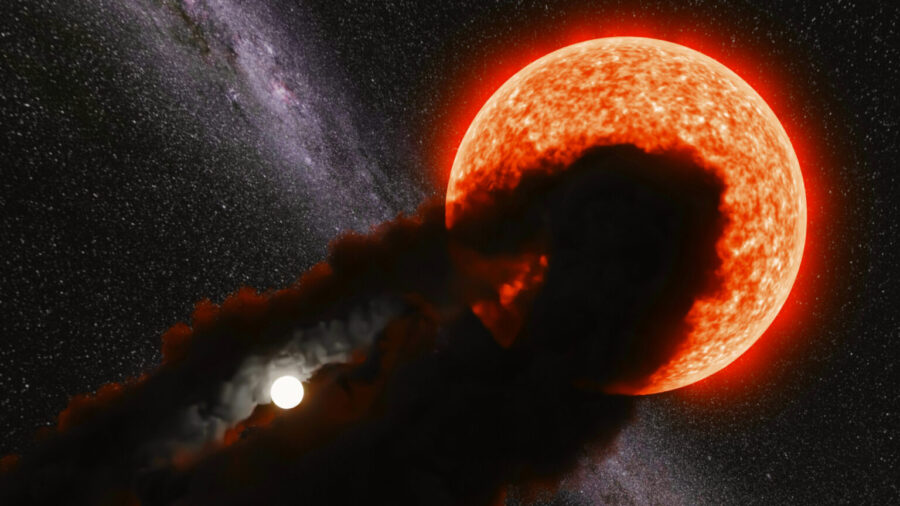A red giant star thousands of light-years away “blinked,” dimming significantly for seven long years, before returning to normal.
Long after it happened, astronomers discovered the remarkable, seven-year-long dimming of a distant Milky Way star. “Unfortunately, we missed the eclipse,” Anastasios Tzanidakis (University of Washington) told the 241st meeting of the American Astronomical Society in Seattle on Tuesday.

Between 2012 and 2019, a bloated red giant star some 26,000 light-years away in the constellation Sagitta, the Arrow, was more than 60 times (4.5 magnitudes) fainter than normal. “Stars typically don’t do this,” Tzanidakis says. He and his colleagues think that the extremely long and deep dimming happened when a slowly orbiting companion, surrounded by a huge disk of absorbing dust, blocked the red giant’s light.
The weird behavior of the star was first detected by the European Space Agency’s Gaia mission. In 2017, four years after its launch, Gaia saw how the star (now known as Gaia17bpp) began to brighten from magnitude 20.5 reaching magnitude 16 in 2019. Last year, Tzanidakis and his colleagues acted on an automated Gaia alert issued back in 2017 and checked existing data from other telescopes to confirm that the long and deep eclipse had begun in 2012. Even older archived observations revealed that Gaia17bpp hasn’t shown any other unexpected behavior since 1950

So what can cause a red giant star to become more than 60 times dimmer for seven years on end? According to the team, the only viable explanation is a huge disk of absorbing material, a few hundred million kilometers across, surrounding a faint companion star that’s in a centuries-long orbit around the red giant. The disk might consist of dust blown into space by the giant star and subsequently captured by its companion, or it could be a debris disk belonging to a white dwarf star. “We need to do more modeling,” says Tzanidakis.
“This is a very interesting find,” says Guillermo Torres (Center for Astrophysics), “and the authors were clever to keep an eye on the Gaia alerts. You never know what you might find there.”

Last year, Torres and his colleague Kristy Sakano reported the discovery of a similar “dusty companion” orbiting the bright star Eta (η) Geminorum every 8.2 years. A much better-known example is Epsilon (ε) Aurigae, which experiences two-year-long eclipses every 27 years.
In the case of Gaia17bpp, however, the orbital period must be on the scale of centuries, given the event’s long duration. Tzanidakis notes that there could be many more similar systems out there that won’t be detectable for a very long time. “What is needed to discover more of these objects,” adds Torres, “are surveys of large portions of the sky, or even of the entire sky, carried out over long periods of time, such as the Vera Rubin Observatory and others.”
Catching eclipses as they occur will help identify the composition of the absorbing material, as it will leave a telltale spectroscopic fingerprint in the star’s light. Eventually, astronomers also hope to learn how these weird binary systems arise in the first place. Says Tzanidakis: “We’re witnessing the emergence of a whole new population of binary stars.”








